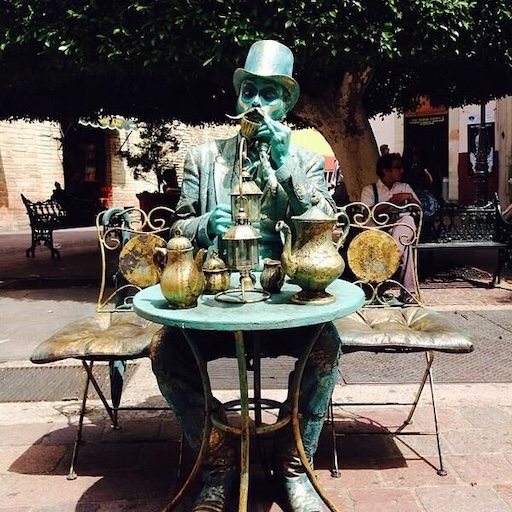
Picture yourself wandering the colorful, cobbled streets of Guanajuato, a colonial-era city with alleyways that twist like an Escher drawing. You round a corner, and suddenly — there it is. A man made of bronze. Or is it stone? You pause. Then blink. He blinks back. Startled laughter erupts around you — because that statue? It’s alive.
Welcome to one of the quirkiest and most mesmerizing traditions of Mexico: the living statues. These human performers pose completely still for hours, dressed as everything from Aztec warriors and whimsical angels to steampunk inventors and dusty miners — a nod to the city’s silver-rich past.
Stillness as a Superpower
At first glance, you may think you’ve stumbled upon a particularly elaborate sculpture installation. But don’t let the motionless limbs fool you. These street artists are masters of control, discipline, and the subtle craft of surprise.
Many can hold a single pose for up to 45 minutes without flinching. Rain or shine, day or night, they stand like guardians of time. But the moment a coin clinks into their tin or a curious child waves a hand — boom! A wink, a wave, a robotic movement, or a perfectly timed nod brings the statue to life, often to the delight (or shock) of the audience.

A City That Loves Theatrics
Guanajuato is no stranger to drama — in the best way possible. Home to Festival Internacional Cervantino, one of Latin America’s most prestigious arts festivals, the city has long embraced creativity, theater, and visual storytelling. Living statues feel right at home here.
But unlike formal stage productions, these performers exist at the delicate intersection of everyday life and silent art. They make plazas their stages, and their audience is ever-changing — from wide-eyed tourists to hurried locals who pause for a moment of wonder.
The performances are often more than just static poses. Some living statues incorporate slow-motion sequences, mimed stories, or interactive gestures. Others invite spectators to become part of the scene — handing them invisible flowers, mimicking their movements, or posing for “statue selfies.”
Behind the Paint
Under the layers of paint, makeup, and costume is a real person — often a local artist or actor, sometimes a student trying to fund their studies, or someone who’s simply found joy and purpose in this unique art form.
Preparation is an art in itself. Outfits are meticulously handcrafted. Paint is carefully mixed to match a bronze patina, marble sheen, or fantasy palette. A single look can take hours to assemble — and maintaining it under the Mexican sun is a performance in endurance.
“It’s not about making people believe I’m a statue,” one performer once said. “It’s about making them stop. Look. Smile. Maybe even think. If I can do that, then I’ve done my job.”

Street Art with Heart
While some see living statues as mere buskers, the city of Guanajuato sees them differently. In fact, performers must register with the local government and follow certain guidelines — not only to ensure safety and quality, but to celebrate their role as living art installations.
Some artists even collaborate with local museums, schools, and theater troupes. During Cervantino, the living statue scene levels up — costumes get wilder, poses more daring, and the crowds much bigger.
Final Thoughts
So, are the living statues of Guanajuato artists? Performers? Street magicians? Maybe they’re all three. What’s certain is that they add a surreal, delightful twist to a city already bursting with color and character.
The next time you find yourself in the heart of Guanajuato, keep your eyes open. That statue in the corner? Don’t be too sure it’s made of stone. Wait. Watch. And drop a coin — you might just witness a piece of magic come alive.
Share this story and inspire others.
Tags: Guanajuato, Living Statues, Mexico street art, performance art, Mexican traditions, travel Guanajuato, cultural performanc
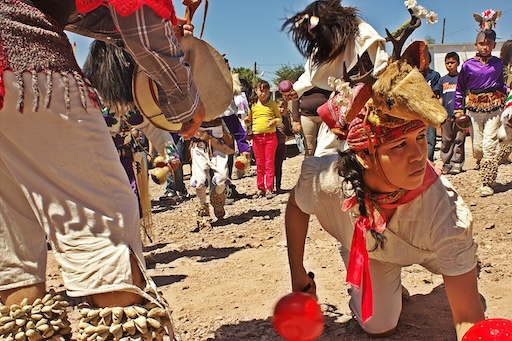 La Danza del Venado – The Sacred Deer Dance of the Yaqui People
La Danza del Venado – The Sacred Deer Dance of the Yaqui People
 Tarahumara Rarámuri – The Ultramarathon Runners of the Sierra
Tarahumara Rarámuri – The Ultramarathon Runners of the Sierra
 La Santa Muerte – The Controversial Saint of Death
La Santa Muerte – The Controversial Saint of Death
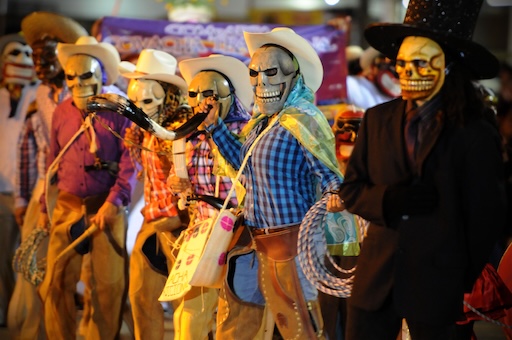 Xantolo – The Huasteca’s Version of Day of the Dead with Masks and Dances
Xantolo – The Huasteca’s Version of Day of the Dead with Masks and Dances
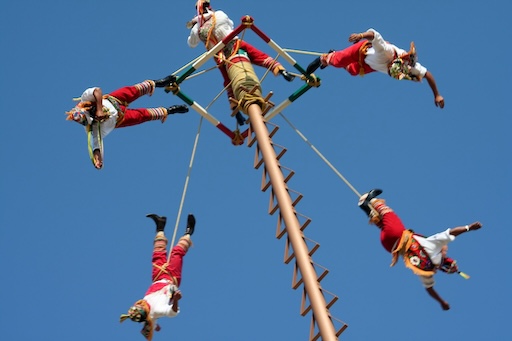 Voladores de Papantla – Men Who Fly from Poles
Voladores de Papantla – Men Who Fly from Poles
 Cenote Sagrado – Sacred Sinkhole of the Maya
Cenote Sagrado – Sacred Sinkhole of the Maya
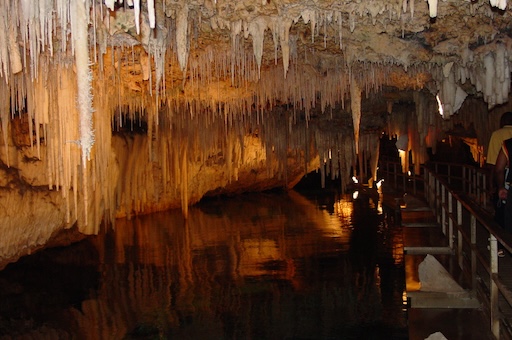 Cueva de los Cristales – Mexico’s Giant Crystal Cave
Cueva de los Cristales – Mexico’s Giant Crystal Cave